We should all be deeply concerned that the Republicans are talking about bombing Mexico. The idea that the United States should go to war against our southerly neighbor’s drug cartels to stop the flow of fentanyl and other psychoactive substances has become a major talking point among the party’s hawkish legislators and leading presidential candidates. Donald Trump, eager to lead the interventionist-hungry pack, has even asked his staff to draw up a “battle plan” so that he can start dropping missiles quickly, should he regain the White House in 2024.
This hubris most likely amounts to base-riling political theater, says former Ciudad Juárez reporter and current College of Staten Island professor Oswaldo Zavala. But in his 2021 book Drug Cartels Don’t Exist (Vanderbilt University Press, $34.95) he explains how the idea of the all-powerful, hyper-violent Mexican narco that can only be stopped by acts of war serves as a cover for state-driven violence propped up by governments on both sides of the border.
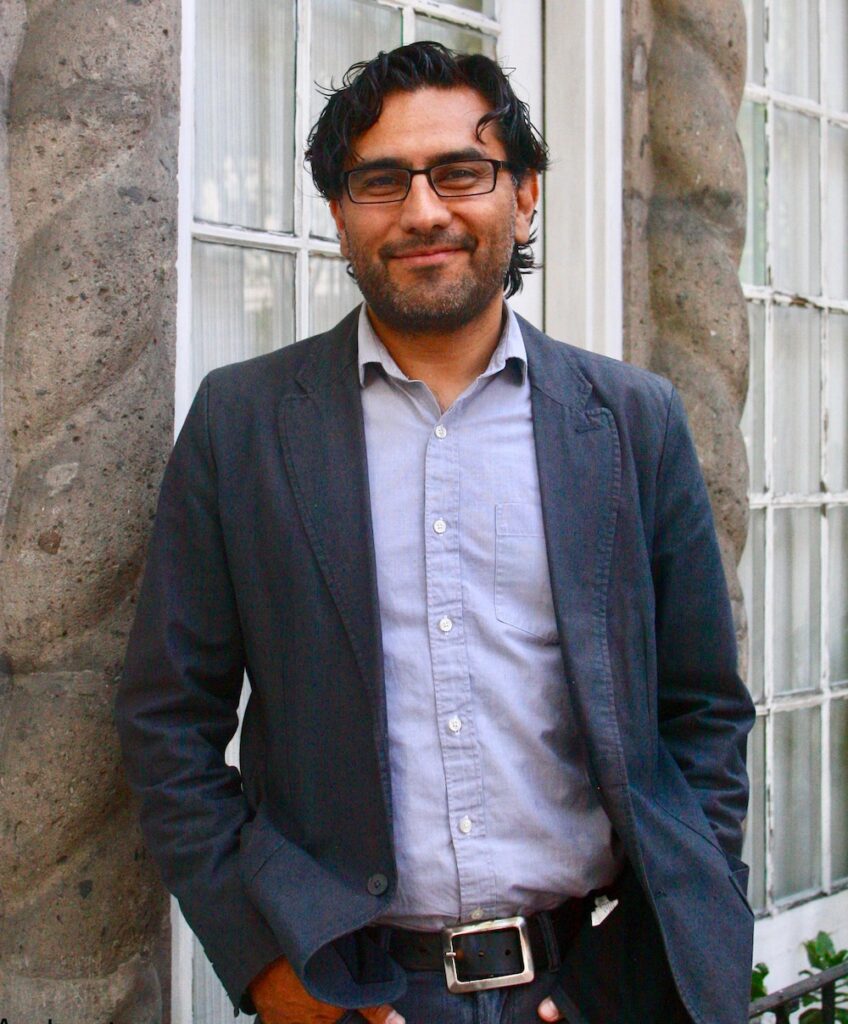
The premise may sound shocking. We’ve been conditioned by decades of political soapboxing and Versace buttondown-clad mainstream media portrayals to attribute the hundreds of thousands of Mexican lives lost and disappeared to omnipotent transnational criminal organizations. But Zavala is hardly alone in his convictions. Journalists like Dawn Paley have been sounding the alarm for years over the fact that Mexico’s so-called Drug War killings take place in regions where corporations benefit from violence-driven community displacement in their quest to raid the country of its natural resources.
In our interview (which originally aired on my Mexico City radio show Crónica and appears here translated from Spanish and edited for length and clarity), Zavala explained how the figure of the narco has supplanted that of the Communist as the boogeyman which justifies the government resources spent on ever-mounting militarization at the US-Mexico border and beyond. This switcharoo is hardly new—Ronald Reagan and yes, Hillary Clinton have been major proponents of narco-as-terrorist school of thought.
Zavala, whose devotes a healthy portion of his book to media studies, even went so far as to point out the complicity displayed by pop superstar Bad Bunny’s participation in Netflix’s “Narcos: Mexico” series. Et tu, Benito?
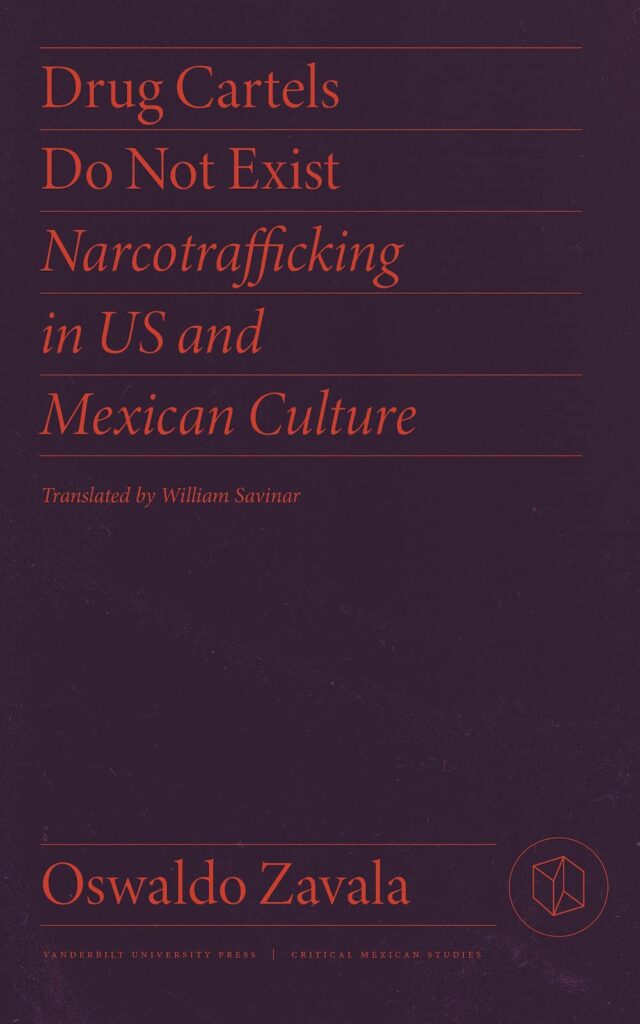
48HILLS According to your book title, the cartels don’t exist. But according to the numbers you share in this book, the loss of 350,000 lives and the disappearance of 80,000 people in Mexico have been attributed to drug trafficking. What causes this violence that has almost characterized life in the country during the last decades?
OSWALDO ZAVALA The nexus that has been built in recent years to think about or explain the violence caused by the activity of traffickers is something that really has been propelled by the official institutions that drive the war against the narcos. That doesn’t mean that the traffickers aren’t violent actors, or that they’re not capable of producing violence, but the principal theme that I want to put into discussion with my work is that militarized politics themselves, the so-called “war against the narcos,” in reality seems to be the detonating factor in the violence, if you pay attention to official figures.
The entire decade before Felipe Calderón’s war began, the militarization that unfolded throughout the entire country since 2007 and continuing on—that entire decade was the least violent decade in recent history of the country. Homicide rates went down starting in 1997 until 2007, and in fact 2007 was the least violent year of the entire decade. That drop was interrupted precisely when the armed forces, federal police, and state police arrived in different zones throughout the country. It’s a very important question that we have to ask ourselves, to what extent was this very militarized, anti-drug policy the producer—or, you could say, the condition—of the violence that we are experiencing in Mexico? How is it that these so-called cartels didn’t appear to be in war with each other, nor were they producing high murder rates, like those which we saw after the militarization. And why is it that only after militarization starts do we see the most serious violence?
Help us save local journalism!
Every tax-deductible donation helps us grow to cover the issues that mean the most to our community. Become a 48 Hills Hero and support the only daily progressive news source in the Bay Area.

48HILLS Something that I’ve been using as an illustration of this when I talk about this book with other people, is the part in the book in which you say that if you lay a map of so-called Drug War deaths alongside a map of corporate extractivist activities in Mexico, what you see are some very disturbing similarities.
OSWALDO ZAVALA More than similar. They match, nearly exactly, by region. The zone in which this is most evident is the region of the Gulf of Mexico. There, in the state of Tamaulipas, one finds the most important reserves of natural gas in the country, and as the academic Guadalupe Correa writes, and various other Mexican and foreign journalists who have arrived to the area thinking in this way, [Drug War deaths and extractivist activity] totally match. It’s place that at one point was believed to be controlled by the [cartel of the] Zetas. In reality, it’s being controlled by a military operation and home to an enormous extractive process that matches up with thereserves of natural gas that is found along this strip. These natural gas reserves are the biggest on the continent, and have been at the center of very significant extractive processes of important transnational businesses like Chevron, BP, Centra Energy. The next question is, how is it possible that in the region with the most violence and a military occupation is at the same time providing in what appears to be an uninterrupted manner, these extractive processes?
48HILLS Worrying. You began your career as a writer working as a reporter at the Diario de Juárez, a newspaper in Ciudad Juárez. Do you remember if there was a particular moment in which you began to suspect that was what happening in that city was not the same as the version that officials were promoting?
OSWALDO ZAVALA I had the luck of having begun to work as a reporter in Ciudad Juárez in the 1990s, writing for the Diario newspaper, which in that moment was very young. I had the enormous fortune of being with two extraordinary journalists that became friends, but who were always mentors. Ignacio Alvarado, who was an investigative journalist who now lives in Mexico City, and Julián Cardona, who was an extraordinary photojournalist who unfortunately died a few years ago, but who left an enormous legacy of incredible photos and a critical take on the violence that was very original.
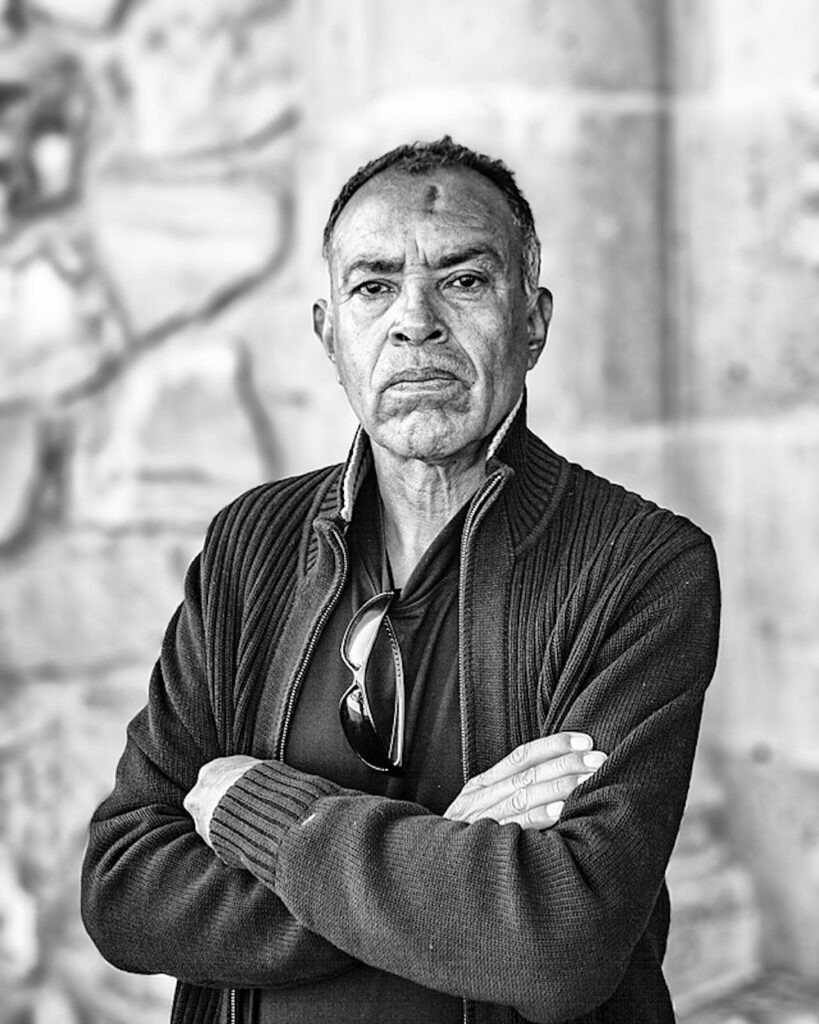
Between the two of them, they explained to me, starting when I began to work as a reporter, that there was a problem in thinking about the subject of narcotrafficking from the perspective official. That’s to say, that thinking in terms of “cartels” is to say what the government is saying. The problem is that we know that when it comes to the subject of anti-drug policy, of this violent way of thinking about the distribution and consumption of narcotics, the state is primarily interested in exercising a disciplinary project of bodies, of state violence. So speaking about “cartels” and “narcos” is a form of justifying, of legitimizing this violence.
What my colleagues at the newspaper told me is that it was very difficult to confirm what the official sources were saying. There’s something called “the Juárez Cartel” that you can’t actually demonstrate exists. How do we know that this thing exists that we are calling the Juárez Cartel? What does “cartel” mean? If you play the game of the officials, the word “cartel” refers to a very powerful, transnational organization, which has presence in many parts of the world, that supposedly has military intelligence and capacity. So if one accepts what the state says about the cartels, it immediately follows that you have accept the response that the state proposes, which is militarize the country to combate these powerful organizations.
How do we reconcile that for all that they tell us that the traffickers are extremely powerful, that they have all this money, that they can defy the government, launder millions and millions of dollars—but what we saw after years of military violence was that the principal victims of this violence are frequently young men who are poor, dark-skinned, uneducated, who had nothing, or very little, and who died being exterminated in cities like Juárez or Monterrey or Ciudad Victoria or Tijuana, etc.? Which is all to say, how can we believe that the narco exists as this terrible monster who appears in Netflix series, when what we’re really seeing is that the army is exterminating poor, young, uneducated men who have no way of defending themselves?
48HILLS It does seem like the US-Mexico border is a place where things become clear, whether that’s the relationship between the countries or other factors.
OSWALDO ZAVALA But I’d add something to that. It’s true, being in the field, being in the city, can give you the opportunity to see things with better clarity. But the problem is that it doesn’t always happen like that. Many times you have people who cover local news, or who come from another place to cover the local news, but they come with a predisposed perspective. It’s not going to be worth much if you come to cover Juárez if you’re going to repeat what the government is saying—which is what happens almost all of the time. Many foreign or national correspondents, or local reporters, wind up believing what the state tells them. There’s a shooting, there’s a murder, and instead of trying to understand something about it, “official sources tell me that it was the Juárez Cartel fighting with the Jalisco New Generation Cartel, and that’s what I’m putting in my article.” That’s not journalism, that’s the reproduction of an official discourse. I think that the essential problem isn’t so much how close you get to the area, as much as with what kind of critical mentality you bring with you.
48HILLS And we know that this kind of information-gathering for Mexican reporters isn’t the easiest thing, or even the safest [Mexico is one of the most dangerous places to be a journalist.] I have a question that is about semantics. “The war against the narcos,” “the War on Drugs”—we’re talking about why these terms are inaccurate, but they’re catchy. Do you have a term that you prefer to use when discussing these conflicts?
OSWALDO ZAVALA It’s difficult, because in the end the War on Drugs isn’t just a term that describes a reality, it’s a narrative device. It’s a way to talk about a phenomenon that pretends to be historical, but in reality seems to be ahistoric, or at least transhistoric in the very ample sense. When you talk about the War on Drugs, people think that we’re speaking from a place of prohibitionism, the 1920s up until the militarization of Felipe Calderón. Part of what I’m trying to propose is not so much to rename the War on Drugs so much as historicize the term, and how to see its limits, the way that it unfurls this idea of fighting against the drugs as a domestic enemy, and how it converts into a domestic enemy something that never was one until the end of the ’80s, in Mexico at least.

What I propose is first, separate the phenomenon of narcotrafficking—and not even narcotrafficking in the pejorative sense, the phenomenon of the production of drugs and narcotics and the consumption of drugs— without it being typified as a problem or a crime. Later, we can talk about prohibitionism in reference to drugs. We also have to talk about the War on Drugs. The War on Drugs isn’t necessarily the consequence of the production of drugs. In reality, it is derived from the US national security platform, a way of looking at the world, thinking of social activity as a threat to national security. The way in which we think about the War on Drugs has nothing, or very little, to do with the actual consumption of drugs, and it does have to do with the way in which the United States organized the planet in what’s almost a plan of constant war, which it has historically filled up with different enemies.
First there was Communism, then of course came narcotráfico, then terrorism. They’ve even tried to talk about narco-terrorism. Now, undocumented immigration is also a threat to national security. I think it’s very important to separate the idea of the consumption of drugs, the production of drugs, prohibitionism, and then separately to think about the military violence, which substitute this platform of the War on Drugs.
I’ll give you an example to clarify: currently, the DEA talks about the continuation of a war against the cartels in Mexico, despite the fact that the cartels—according to the DEA—have less to do these days with drugs. That now they do extortion, contraband avocados, gas theft—which is to say, the narco is no longer the narco of drug trafficking, but rather of whatever they want. The trafficking of people, of immigrants. It’s very important to understand that the platform of the War on Drugs is a platform of military violence, generally unloaded in the direction of vulnerable populations, and does nothing or very little to stop the flow of illegal narcotics to the United States, or their consumption and distribution in the United States.
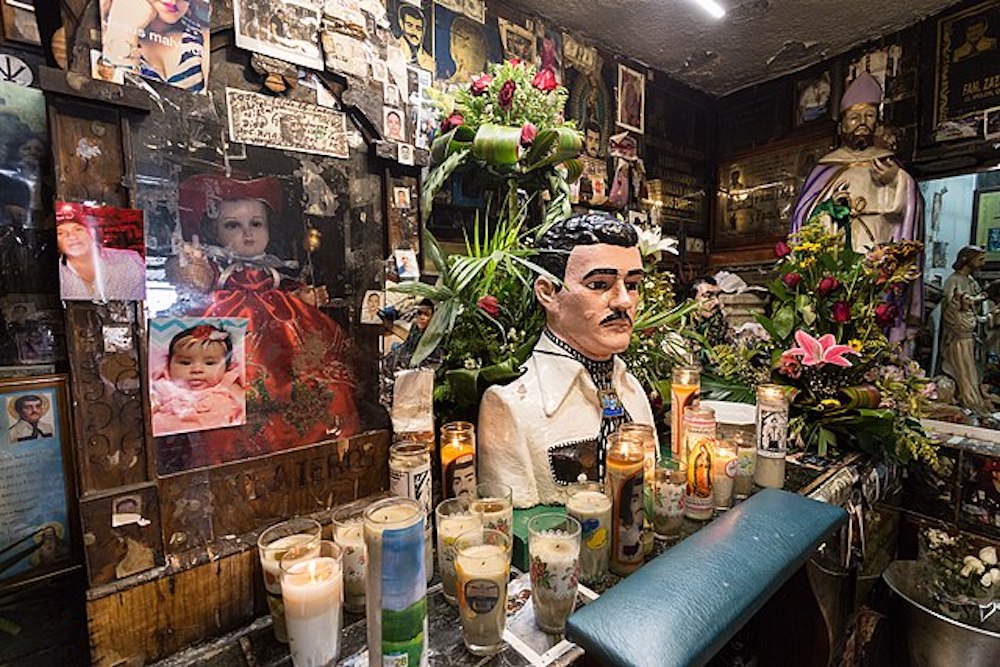
48HILLS Yes, you really can’t wage a war against inanimate objects. In Drug Cartels Do Not Exist, you talk about the construction of this idea of the narco as a flashy, malevolent figure dressed in a Versace shirt and ostrich skin boots, and how this characterization helps justify the violence perpetuated by the state in the name of defeating him. But the figure of the bandit has long existed in Mexican culture—I think about Jesús Malverde, the criminal who roams around robbing from the rich to give to the poor. How does today’s “narco” differ from this historical figure?
OSWALDO ZAVALA Excellent question, and I think you’re headed in the right direction. The history of banditry, which has been studied largely from the 19th century, generally produces a figure that permits the dominant institutions to close down against resistance or contrainsurgency against processes of domination. The bandit, for example during the Mexican Revolution, referred to people like Pancho Villa, and resemantized what was a legitimate struggle and relocated it into an illegitimate space of power. By calling him a bandit, Pancho Villa was no longer a revolutionary with a legitimate fight but rather someone who was making an attempt against the social order, against the government, etc.
It’s true that there are echoes of banditry in the way in which the narco-trafficker is presented in the 1970s and 1980s. I think that up until that moment, the narco seemed like a kind of bandit as in the space that Malverde occupied, these rural, rancher men with sombrero and boots. In the the narratives of those years—for example, in the corridos of Los Tigres Del Norte or the B-movies of the Almada brothers that were very popular in those decades—the bandit that appeared, the trafficker that appeared, came with a cautionary tale, a kind of moralist and classist vision in which it seemed to tell you that the trafficker should not commit these crimes because things would turn out poorly. The message was for the audience: do not engage. Don’t get involved in this kind of thing, because if you do, you’ll wind up in prison or you’ll be killed or you’ll be betrayed and everything’s going to turn out poorly. Up until that moment, the trafficker seems like the bandit that was created at the start of the 20th century or even before in the 19th century. But the trafficker as we began to understand him, beginning in the ’90s, is no longer exactly this bandit, and is much less a moralist cautionary tale. He’s more of an agent of mass destruction. He’s a guy who was literally codified by President Reagan—again, there’s the importance of Reagan in this discussion—in 1986, he puts out a presidential order to designate the traffickers as a threat to national security, effectively replacing the Communists as the big threat to the security of the United States.
So imagine the way in which we symbolically construct in the cultural imagination the narco, beginning in the ’90s. They’re no longer being presented as this rancher man with boots, but rather a super-potent transnational delinquent, owner of a brutally violent team, threatening fortunes, arsenals, warlike, that can effectively wage war. After the ’90s—the trafficker not longer a bandit, he’s a super criminal—or as Hillary Clinton would call him, this “super predator.”
This is the idea of the trafficker as we conceptualize him now, and it is legitimized all the time in multiple cultural products: on TV, in the movies, in music, in conceptual art, even in corridos, which have also changed their imagination. The corridos in the ’70s, for example—I always think of the example of “Camelia la Tejana,” the corrido of this couple that crosses the border with a little bit of marijuana, and at the end, she kills him because she feels spiteful—this is no longer possible beginning in the 1990s. Beginning in the 1990s, you have “the boss of bosses,” this super-powerful trafficker who controls the media, who controls the state, who has overtaken the army, who buys the police. This only thing we can do in response to this powerful trafficker is take him on with an army, our official, federal, state army. The function of this trafficker is to establish this morality, this cautionary tale. Really, the function of this trafficker is to legitimize the militarization throughout the country. So that people accept that there are members of the military in the streets, and to normalize one way or another the hundreds of thousands of murders that are going to follow in the wake of this militarization.
48HILLS I think that part of the reason why this book is so important is that we are in a moment in which anti-drug rhetoric is reaching new heights. Republican legislators and presidential candidates have expressed their supported for declaring war against the cartels, basically blaming them for the murder of the 71,000 people in the US that have died from overdoses caused by synthetic opioids—and that’s the number from 2021 alone. Donald Trump, for example, has been saying that he wants to classify the cartels as terrorist groups since his first presidency. In 2019, he tweeted that he wanted to “wipe them off the face of the earth.” Now he’s looking for re-election, and with his typical lack of subtlety, has asked for a “battle plan” for this attack.
Do you think it’s possible that these guys will actually bomb Mexico? Or better put, do you think we have entered a new chapter of gringo aggression against Mexico, or is this nothing more than a continuation of what has always gone on?
OSWALDO ZAVALA The idea of narco-terrorism, the idea of classifying the cartels as terrorist groups, is very old. It’s something that began to appear in the United States political vocabulary in the 1980s. It’s in this document that I just referred to, in which Ronald Reagan designates the narco-traffickers as a threat to national security. In that document, they’re already talking about the narco-terrorism, about the traffickers operating as terrorists. That document is from 1986. Then in the 1990s, this idea circulated and it continued circulating until the Obama administration, when Hillary Clinton insisted on talking about the traffickers as insurgents. In her time as a senator, she also proposed several times that we think about the traffickers as terrorists. So you have to say that this idea of narco-terrorism has bipartisan sympathy—it’s not just the Republicans, it’s also some Democrats. So to get back to your question, I don’t think that [bombing Mexico is] really viable, nor that it could really happen that the US military apparatus could permit a military incursion with troops within Mexico. I think it would be a major stupidity. I don’t believe, simply because for one I don’t think it’s necessary. I think that the military influence in Mexico is very potent. There’s an enormous dialogue and cooperation—
48HILLS Right, the US is already funding and training the Mexican military anyway.
OSWALDO ZAVALA —to a large extent the Mexican security apparatus has always been drawn up around the United States, modeled on the United States. And even if there is resistance, as there is in the current government of López Obrador, this continuity is always operating. I think about how the Mexican military is patrolling the northern and southern borders, externalizing the US border all the way down to Chiapas, and doing as we say, “the bidding” of the US anti-immigration policy. Mexico is an anti-immigrant aggressor in the way in which the United States wants it to be, and the leftist government of López Obrador finds it impossible to detain this aggression.
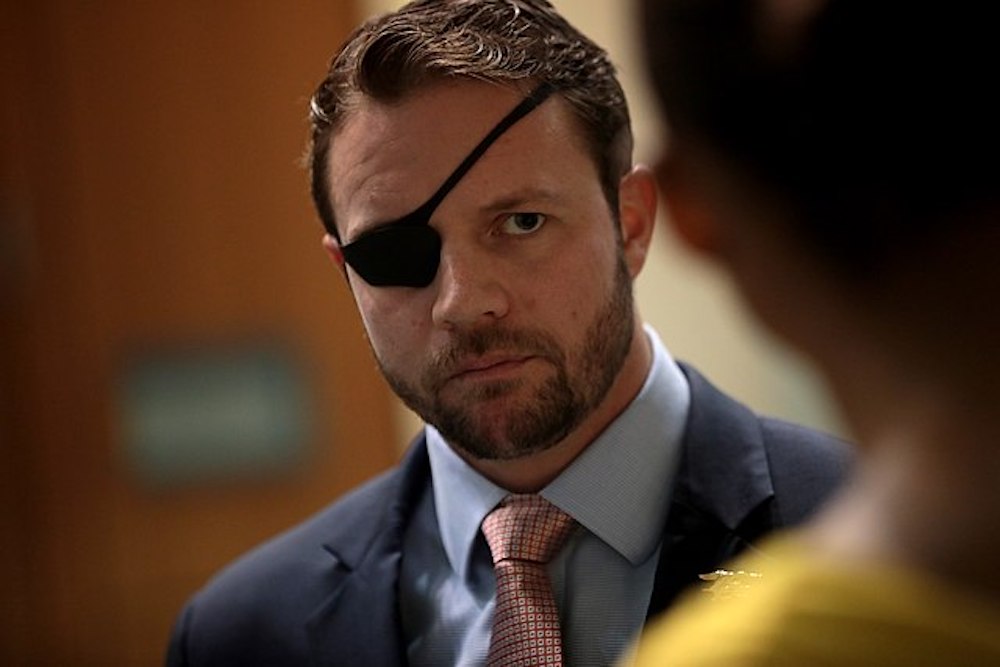
I think there is a great degree of political theater in all of this, and that the Republicans use it as a form of firing up their base. This member of Congress [Daniel Reed] Crenshaw, who looks like Nick Fury, who is always mad and wants to send missiles—which it appears that Trump actually tried to do when he was in office, but not even his own team paid attention. So I think it’s very difficult, though I don’t want to say it’s impossible. It would be the most extreme, violent, perverse expression of this poorly-named war against the narco, because it brings us to another level of extermination, a personal, massive, terrible extermination. Maybe that would be the final catalyst of a larger resistance in Mexico to these anti-drug policies. I hope we never get there—it would truly be a dangerous breaking point between the two countries. I doubt that, first of all, that Donald Trump will become president again and I doubt that, even if he makes it to the presidency, he’ll be able to put a plan like this into force.
48HILLS Where can we go for narratives that are a bit more reflective of the truth of what’s happening in Mexico? We keep seeing these books and movies and series come out that portray the narco as these super violent, super glamorous, super rich individuals, as if this is going to teach us something about where Mexico stands.
OSWALDO ZAVALA Of course, and they keep putting them out as if they were new ideas. I’m going to give you a couple of recent negative examples and then I’ll move onto positive ones. I think about the series “Jack Ryan,” which is based on Tom Clancy’s books. John Krasinski is in it, that actor who became famous on “The Office” playing a good guy. Here, he’s a CIA spy. In the last season, he fights against a Mexican cartel that is located in the Yucatán of all place—I don’t know why in the Yucatán, Mérida is one of the least violent cities in all of Mexico, the most peaceful—but anyways, this cartel in the series is linked to a Southeast Asia terrorist group. The idea of narco-terrorism is completely built out in this series. Krasinski admits publicly that the series is made under the supervision and with the consultation of the CIA. That’s a phenomenon that is constantly taking place.
This series and these cultural products aren’t born out of some spontaneous harmony with the security discourse. They are closely watched over and censored by the intelligence agencies of the United States, by the security apparatus, by the Pentagon, by the Defense Department, etc. It’s the same thing with Tom Cruise’s Top Gun—but there are so many more, thousands and thousands of products. In music, I’m concerned to see how much we celebrate a singer like Peso Pluma, who gives us a fresh look at the idea of the narco. His narco characters look similar to El Chapo’s sons, these young people who are “legacy narcos,” who live lives of excess, of licentiousness, etc. Mainstream United States consumes his music. It’s the Trojan horse of the cultural industry, and I think the same thing happens with Bad Bunny—but anyways, that’s another conversation.
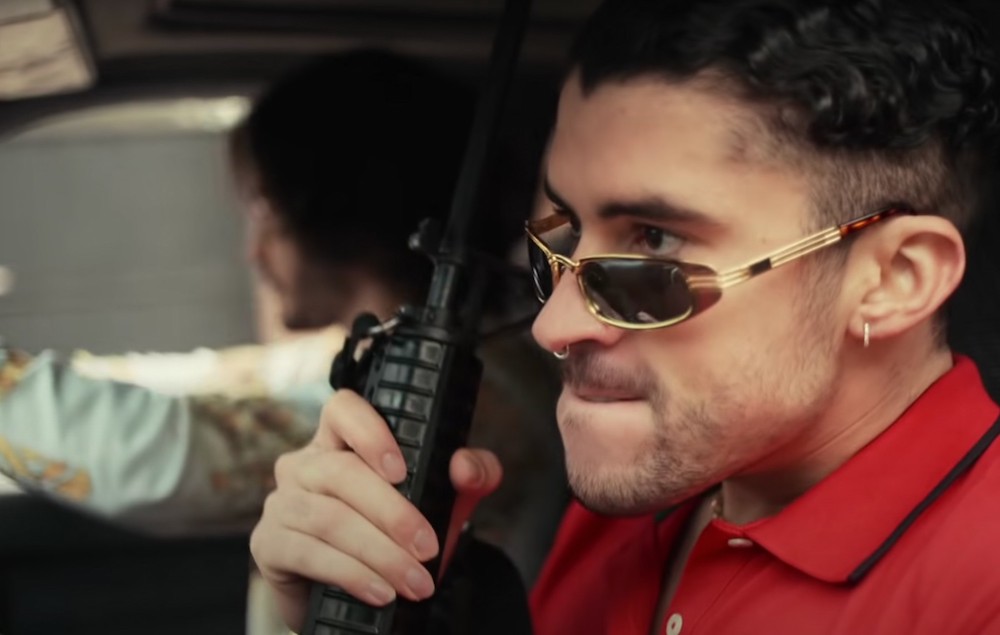
48HILLS I’m sure Bad Bunny and Peso Pluma have a collaboration in the works.
OSWALDO ZAVALA Of course! Because Bad Bunny does something similar—he goes through life acting like he’s progressive, and then he turns up in “Narcos,” perfectly happy to play this violent trafficker. Those actors, or singers, or actor-singers, sell the idea of the Latin American in two ways. One is a very violent trafficker, and the other is super sexy symbol of inexhaustible sexuality. Those are the two kinds of Latin Americans that the planet consumes.
Now, there are not a lot of positive characters and singers, but there’s one who I really like to refer to. It’s a movie that I recommend that everybody watch that is called Saving Private Perez (2011). It’s a movie directed by Beto Gómez, and the premise of the movie is fun—well, first of all, the title is a parody of Saving Private Ryan, the Steven Spielberg movie. The premise of the movie is a trafficker who promises his mother, who is dying, that he will go rescue his brother. His brother immigrated to the United States and joined the army, and he is kidnapped when he goes as part of the invading army to Iraq by a Suni group. The US government has decided that they are not going to be able to save him and that they are going to retreat. So the trafficker, his brother, puts together a kind of Mission Impossible with various other traffickers to go to Iraq and save his brother.
The premise is marvelous, and what I would say, in contrast to many critics, is that it’s not distorting or ridiculing the idea of narco-trafficking in Mexico, but rather it’s taking official discourse at its word. The official discourse says that the traffickers are so powerful that they extend to 200 countries all over the world, that they move thousands of millions of dollars, that they have intelligence forces in every country—so why wouldn’t they be able to go to Iraq and save a soldier? Of course they’d be able to! If you pay attention to the DEA, Mexican traffickers could do that and more. So the idea that the script proposes is not ridiculous, the idea of the narco-trafficker that the DEA proposes is ridiculous in itself. The only thing that the script does is put it to the test, take it at its word, and see what happens. So it’s very fun, it’s terrible, there’s a very important moment in the movie in which the trafficker encounters the Suni boss who has kidnapped the soldiers. The two look at each other, and they only see each other as enemies even though they are both the product of US interventionism. Which is to say, the two are the product of a hostility, a militarized US war. I always think of this moment as that Spiderman meme, when the different Spidermans are pointing at each other.
Buy Oswaldo Zavala’s Drug Cartels Do Not Exist here.





